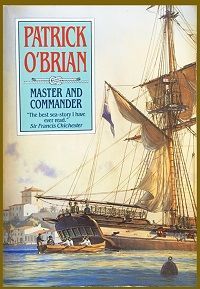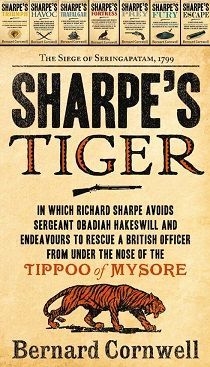Article
Book Reviews: Historical Fiction
Author(s):
I’ve never agreed with purists who are offended when novelists dare to put words into the mouths of famous figures. Those readers don’t like historical fiction, understood. But if fiction often springs from personal experience, isn't that just a form of historical fiction and we do accept that?
I’ve never agreed with purists who are offended when novelists dare to put words into the mouths of famous figures. Those readers don’t like historical fiction, understood. But if fiction often springs from personal experience, isn't that just a form of historical fiction and we do accept that?
As an exiled Scot I was always curious about the life (and death) of Mary Queen of Scots, who was executed by her cousin Queen Elizabeth more than five centuries ago. My high school history books didn’t explain much but I came across a novel about this by a woman -- whose name I forget (it may have been Margaret George) -- whose detailed research for her novel so greatly clarified those times it all came alive for me.
The belief that true historical fiction has to be set 50 or more years in the past has brought English author Ken Follett into this group as so many of his novels deal with World War II. When asked why this historical genre was so popular Follett once said because “the readers care about the people involved.”
Readers do care. For example, American Diana Gabaldon, author of the Outlander books, is close to having her ninth published. And Kristin Hannah’s The Nightingale was her 20th novel and declared by The Wall Street Journal to be the best book of the year in 2015. Many readers agreed: it was a touching story about the role in the French Resistance played by a young woman. Follett was right. We do care about those people.
I certainly cared when, as a school boy, I read works about Africa by Victorian author H. Rider Haggard, about India by the 1907 winner of the Nobel Prize in Literature Rudyard Kipling, and about the 19th century British Royal Navy and its young naval officer Horatio Hornblower in the 12 books of author C.S. Forrester. Forrester, who was never a keen student, failed medical school at Guy’s in London but finally became a successful writer at the age of 27 writing about the Napoleonic Wars of the previous century.
These wars have been fruitful for many other authors including Patrick O’Brian, whose 21 volumes about naval officer Jack Aubrey and his close friend, ship’s surgeon Stephen Maturin, handsomely exceed Forrester’s output.
(photos by the author)
BOOK REVIEW: Master and Commander by Patrick O’Brian

The series began its publishing history in 1970. I picked up a copy of the first recently at the Book Mark paperback book exchange in Escondido, California, knowing how successful O’Brian had been as a novelist, how great the movie with Russell Crowe had been and how famous yachtsman Francis Chichester had called it “the best sea story I have ever read.”
I do not share his opinion. Chichester led an amazing life. I thought his The Lonely Sea and the Sky published in 1964 and his follow up in 1967, Gypsy Moth Circles the World were both magnificent. Here’s a guy who flew his de Havilland Gipsy Moth from England to Australia in 1929 and was stopped from continuing on around the world only by a “near death catastrophic crash.” Diagnosed with cancer, two years later he won the first single-handed transatlantic yacht race in Gipsy Moth III and then he was the first to singlehandedly circumnavigate the globe. His autobiographies command such respect that any reader would believe in his approval of Master and Commander. However, I suspect Chichester’s endorsement resulted from the accuracy and the professional seamanship shown by the author -- which I feel interfered with the telling of the story. One would have to read the whole series beyond Book 1 to find out if, once O’Brian had explained the technical stuff, he settled down to the narrative.
To be fair, I recall taking my 12 year-old son Michael to a Colgate Sailing School week in Florida in 1980. The students had the impatience of the young. They found the first few hours tedious: landlubbers needed to know the language of the seas! Colgate justified this need-to-know the correct terms: “There are times on a boat when the action is fast,” he explained, “and the correct action has to be taken at the right time or disaster results. You can’t afford to shout, ‘Let that thing over there go!’ when you mean, ‘Free the jib sheet.’”
O’Brian knows this. He has researched exactly how sailors talked in the early 19th century but there are no footnotes that translate those nautical terms, and some of those pages might be boring for an average reader like me who might prefer the story to get going. Maybe I’m saying I would prefer novels that have less history and more exciting fiction. The novels of Wilbur Smith come to mind. His novels of Colonial Africa certainly moved along and were understandable to European readers. That may be why they were disliked by so many local natives who never cared for the Colonials from whom they had to wrestle their counties. Yet, they were rousing great stories into which readers could become immersed. It was really like learning history without realizing it. Nine of Wilbur Smith’s novels were made into films. Smith’s first published novel about the colonial Courtney family When the Lion Feeds was published in 1964. A personal bias is that Smith’s earlier novels were better than those he wrote as he got older (common amongst novelists who have created a huge output). Exceptions about this First is Best might be the novels River God and The Seventh Scroll published in 1993 and 1995 which I felt were brilliant.
BOOK REVIEW: the SHARPE series by Bernard Cornwell

I believe Cornwell is the best of all the writers of historical fiction. Readers get lost in the story whether they are reading about the Vikings and the beginnings of the Anglo Saxon country of England as “two men struggle to inherit the crown of Wessex.” Or maybe a tale of the American Penobscot Expedition of 1779 “where the rebel government in Boston determined to expel a British garrison in Maine.” How about the Battle of Agincourt, a famous defeat of the French Army by the “outnumbered sick army” of the English king Henry V that looks at this famous battle from the point of view of the celebrated English archers. English archers required extraordinary strength to pull the string on a huge English yew bow; they were the equivalent of artillery in the Napoleonic Wars of the early 19th century. Cornwell has written about Stonehenge, about ships at sea, and even about the American Civil War but by far his readers love him for his series of 24 books that follow a young uneducated man who accepts, instead of prison, the “king’s shilling” to join the British army that will soon be fighting against Napoleon and his army that has conquered Western Europe and now threatens British interests.
Cornwell followed his American sweetheart to the United States started writing because he did not have a green card. He has said he never thought the Sharpe stories would be so successful and when he had finished the original dozen or so he went back in historic time and filled in spaces whose battles he had not covered previously. Thus it can be a bit confusing because the first one in chronological time, Sharpe’s Tiger, was not written first but about halfway through the series. The two dozen books in the series follow the recruit Richard Sharpe through his life in the British infantry where some of his officers are incompetent aristocrats who have bought their commissions and who resent his promotion in the field because he saved the life of the British commander, the Duke of Wellington. Sharpe is no aristocrat! He is too competent a leader himself not to succeed as the series progresses finally taking him to the Battle of Waterloo in 1815.
The books are well written and the description of how Sharpe saves his general on the battlefield is heart stopping. This brings us to the very success of all those books because they were brought to the TV screen by BBC America to rave reviews. Maybe, but the quality of the original TV shows was of poor quality with no captions available and the producers, confronted with the complicated battles of large combatant armies had, perforce, to spin off Sharpe’s army as a small special squad as if they were British Green Berets in the first decade of the 19th century. That way the expense of immense battle scenes was avoided. The camera only had to follow a small group. Yet despite the modest budget the TV series had a most appealing leading character, one Sean Bean who had played 006 in a James Bond movie and had important roles in both the HBO Game of Thrones and The Lord of the Rings. Viewers of the TV series particularly moved by Sean Bean’s performance may have no idea how much more powerful the character is in the print stories. The third message on this web page here suggests the order in which the books should be read.
The Sharpe series works because the main characters, the good guys, are so likeable, so honorable and seemingly so triumphant, ultimately, over their enemies, both personal and national. The book details a class system that favors the wealthy and the cultured yet has minorities like the Irish and the uneducated often prove to be better street fighters on the battlefield. A theme is courage brings victory, honesty brings love — and, maybe we could say, good writing brings an audience.
The history is unobtrusive. You are educated about the Napoleonic Wars before you quite realize it.
BOOK REVIEW The Rising Tide by Jeff Shaara

Jeff Shaara’s style is different. His research, like Patrick O’Brian’s, shows. It is well documented. If he writes that Bernard Montgomery, the pain-in-the neck British general said this, you can bet your boots it is recorded thus in an official document. He has pored over war records. Shaara’s father won the Pulitzer Prize for his book about the American Civil War. It was made into the award-winning movie Gettysburg. Shaara, the son, has written four books about World War II. The first about the battles in North Africa, the second about D-Day and the first few months. The third leads from that through the end of the European war and the fourth, which I have not yet read, is about the war in the Pacific.
Shaara writes fascinating overviews of the war in that particular world theater then, using his knowledge of who and what and where and why, he introduces you to his characters, some real and some fictitious composites as they fight their way through that episode. Both the history and the fiction is well done but you know which separate section (history and fiction) you are in. It’s very effective and pleasing. Cornwell, on the other hand, knows his stuff but is so laid back with his knowledge and his comfortable style that you’d imagine he had lived in that period and actually fought for England against Napoleon! Cornwell is such an engaging character that you know: had he fought for his country, he would have fought so well.
The Andersons, who live in San Diego, are the resident travel & cruise columnists for Physician's Money Digest. Nancy is a former nursing educator, Eric a retired MD. The one-time president of the NH Academy of Family Physicians, Eric is the only physician in the Society of American Travel Writers. He has also written five books, the last called The Man Who Cried Orange: Stories from a Doctor's Life.




